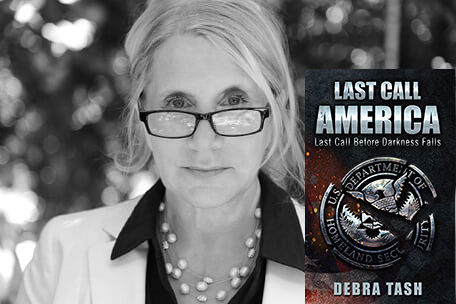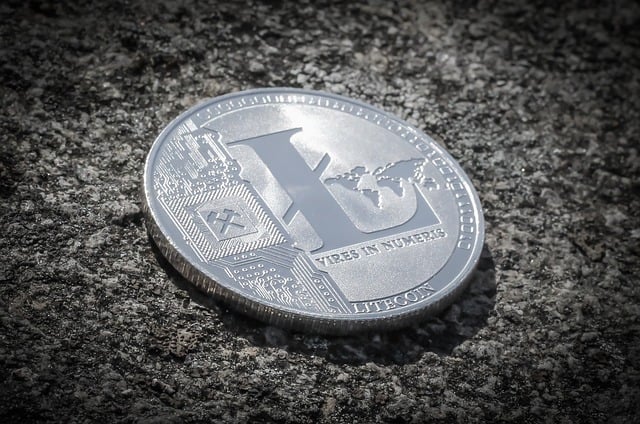Every period in history carries with it its own unique set of characteristics that set it apart from other times. Though this is always true, it does seem, to many, that our current time is especially packed with details that single it out. This has become a guiding topic of note in the recent work of Ryan Seacrest. As the radio and television host has continued his work to bring people access to topics of current importance, it was unavoidable that he’d touch on the specifics of the age in which we live. Below, we’ve taken an opportunity to highlight some of his efforts and shine a light on the unique nature of current world events.
Entertainment industry
Ryan Seacrest has been dubbed by some as the “Ultimate Hollywood Insider.” Through his work on shows like American Idol, On-Air With Ryan Seacrest, and Live with Kelly and Ryan, he has developed a reputation for being in the know on issues of importance within his industry. This has come, in part, from the constant contact he maintains with other entertainment professionals through friendships, professional events, and live interviews. Due to this high degree of knowledge, it makes sense that many of his insights would center around the entertainment industry itself, a topic of interest to large numbers of people around the world.
Of course, due to current quarantine guidelines related to the Covid-19 pandemic, the entertainment industry, like many other fields, has seen its status quo heavily upended. This is very apparent when it comes to the actual act of producing both film and television. These productions typically require a large number of people working behind the scenes to ensure that everything goes off without a hitch. Traditionally, production sets can include camera crews, lighting professionals, makeup artists, wardrobe designers, production designers, writers, directors, producers, on-set talent, and many other people working in tandem towards a common goal.
Clearly, these production paradigms are not able to exist within current quarantine guidelines which, in many areas, prohibit the gathering of large groups of people. While these guidelines might seem like they would make it nearly impossible to carry on with production at this time, many television shows have found ways to adapt to continue bringing their content to their fans. The radio host took some time recently to shine a light on these efforts in order to showcase how his industry is innovating to keep its work moving forward.
Bachelorette production
One show that has become a staple among American viewers in recent years is “The Bachelorette.” The reality tv show follows a main female contestant as she decides between a group of male contestants, selecting one for potential romantic interest. Though the show remains popular at present, it’s easy to see how such a program could be challenging to produce given present-day constraints. However, rather than let these constraints deter them, the show’s production team is getting creative in order to continue on with its mission.
In this case, the show has flown contestants out to the filming location in Palm Springs and is having them quarantine for two weeks to ensure all contestants are free of any signs of Covid-19. This will provide a controlled environment where production staff can then test contestants as they leave quarantine to ensure that they are safe to proceed to set. As a backup plan, the production team has also flown additional contestants to the location and is keeping them in quarantine as well. If one of the main contestants were to test positive for the virus, the production team plans to swap them out with one of the backup options.
This plan will also incorporate pared-down on-set production crews wherever possible, which has led some to wonder how the show will tackle the myriad of needs that go into typical production. Though it remains to be seen how this will unfold in practice, there is an assumption that the show will look a bit different than it has in years past in order to work within the constraints of its new reality. One aspect of the show that is likely to remain the same, however, is the “confessionals.” These economically shot interviews with contestants already work within the context of a pared-down crew, making them an ideal point of focus for the show as it seeks to push forward.
Broadcasting from home
Of course, Ryan Seacrest himself has continued his own shows throughout the quarantine so he also makes for a great case study as to how radio, film, and television productions can continue onward despite current constraints. The radio and television host has been recording from his home in Los Angeles, utilizing in-home equipment to broadcast with the same high-quality that fans have come to expect.
As one might expect, however, there are a fair amount of bumps in the road when transitioning to a new broadcasting setup, especially in the midst of the confusion that has accompanied aspects of the global pandemic. While this has caused a few on-air technical difficulties, it has also been the source of some light-hearted moments that have helped to provide levity during a time when many people are experiencing numerous challenges.
One such moment has come courtesy of an engineer that has been on hand to help the radio host with his technical setup, should he encounter any difficulties while broadcasting. The moment came during the recording of Live with Kelly and Ryan, when Kelly Ripa’s husband, Mark Consuelos, appeared in the background of her shot with his shirt off. That moment in itself was good for an on-air laugh, prompting Kelly to goad Ryan into taking off his shirt as well.
While the television host refused, his in-house engineer was happy to oblige. In a moment that is truly a sign of the times, the engineer flexed on-air, shirtless, while still wearing his mask. The turnabout gave Kelly a good laugh and had the engineer celebrating with a beer in recognition of his unique appearance on national television.
Giving interviews
While the television host is usually the one conducting interviews, he and his co-host, Kelly, recently appeared on Jimmy Kimmel Live! which gave another opportunity to see how the entertainment industry is evolving at present. The episode, which was guest hosted by Sebastian Maniscalco, featured the host quizzing Ryan Seacrest about his typical daily routine amidst all the changes that have been going on.
Seacrest gave a rundown of how he’ll usually wake up at 4:30 am in order to accommodate the disparate production schedule between his home on the West Coast and East Coast television realities. In order to support the demanding schedule, he joked that he’s careful to supplement with plenty of caffeine throughout his morning. The television host recounted that he’ll usually start with a tea before having a couple of cups of coffee and more tea if needed. He also noted that he has a green juice in the evenings, making some good-natured comments about the “fluid” nature of his diet these days.
Discussion during the interview also turned to the trials and tribulations of broadcasting television shows from home, with Kelly noting that internet usage is always a challenge. Since she has three to five adult children in the home at any given time, competition for the limited resource can be fierce. But, she joked, that the person on camera gets priority so she’s usually able to monopolize the internet while she’s filming.
Though the show’s future production schedule is still uncertain, the two television hosts did relay that there are preliminary plans in place for a return to in-studio filming. At the moment, the tentative plan is to return to these operations in September, though, like many other aspects of life these days, that plan is subject to change.
Back to school
On the topic of making plans for eventually exiting quarantine and resuming more normal activities, how and when to return to school has become a focus for parents around the world. Like the entertainment industry, many aspects of the educational experience moved to a virtual environment in the wake of stay at home restrictions. Though virtual classrooms were able to make the best of a difficult situation, many parents have reported a reduction in the quality of the learning experience for their kids, if for no other reason than the lack of focus that can accompany such a change.
As such, many parents and children are eagerly awaiting news of how a return to more traditional education methods will be accomplished. Though such a return is hotly anticipated by many, there is, of course, the ever-present need to so in a safe and responsible manner. How to do that has remained a question, but an emerging technology just may have an answer that can help. Ryan Seacrest and his co-hosts recently showcased the technology on their radio show.
The technology in question comes in the form of a lanyard that emits a warning when it comes within six feet of another lanyard. In practice, this would mean that if all the students at a school were wearing the new tech, they’d be able to be notified when they were within six feet of another student and could take corrective action to create enough space to effectively social distance.
Technology in practice
When discussing the technology on the show, the radio hosts debated the pros and cons of how the innovation might contribute to the ability of schools to resume teaching. The hosts agreed that it would likely be most effective with younger children, who may need more constant reminders of how much distance to keep between themselves and their classmates. This may be especially relevant at the beginning of the school year when students might be excited to see their friends and eager to reconnect.
The co-hosts did also discuss, however, how the technology only addresses some of the concerns that could crop up when considering a return to a traditional schooling environment. While classroom education could likely be conducted with students sitting six feet from each other, other activities that we consider normal for school life may prove more difficult. Recess, for instance, may not be feasible in its previous form under current social distancing guidelines.
Extracurricular activities represent another hurdle when it comes to the reintroduction of kids into their previously normal environments. For instance, many sports would likely be impossible to engage in while maintaining proper social distance between athletes. On this topic, the radio host gave the example of football, which requires a high degree of contact and would bring large groups of athletes within close proximity of each other. Another host mentioned that she was planning to keep her own children out of dance class for the foreseeable future, even though they were eager to return, since she couldn’t see a way that such an activity could be handled safely.
Levity in quarantine
Though the above concerns do loom for many people around the world as the future remains uncertain, many individuals are still finding plenty of reasons to laugh in their current circumstances. One example of this came from an interview Ryan Seacrest recently conducted with actress Tracee Ellis Ross. Star of the new film “The High Note,” Ross recounted a story that is all too relatable centered around toilet paper and the early days of quarantine.
“So when everything started, I usually keep a good stock, but I was like — We’ve got to get some toilet paper!” said Ross. “So on Amazon I ordered what looked like a 24-case of toilet paper and it took me 2 and half months to get it and it finally arrived. I’m not joking you, it was for a dollhouse. These teeny little rolls of toilet paper. I’ve never seen anything funnier.”
The story is all too relatable as toilet paper has become a major focus of many during their time at home. As more and more people stocked up on toilet paper during the beginning of that time, stores experienced massive shortages. When people then turned to the internet to make orders of toilet paper, plenty of stories emerged of people placing orders without noticing the fine print.
The radio host could relate to the predicament, stating that he too had had his own mixups when ordering items online. One example he gave was of an ice bucket he ordered that he was expecting to be able to hold a large number of items at once. However, when it arrived, he found the bucket was hilariously small. It barely fit a single water bottle. The actress could relate, also recounting an instance when she thought she was ordering a single packet of Jello but ended up with a 24-pack. The takeaway for both the host and actress was that they’d do well to read product descriptions more in-depth before placing an order, otherwise, you never know what could arrive.
This truth was underscored for the radio host when he recently ordered a red, white, and blue shirt online for use in conjunction with the fourth of July holiday. Though the shirt arrived in time for the festivities, the radio host had a surprise in store for himself. Having thought he had ordered a small or a medium, he opened his delivery to find that he had, in fact, ordered an extra small. He showcased his gaffe on-air, giving his co-host a laugh and proving that he had a sense of humor about it. It seems that the need for caution when placing online orders is ever-present in the radio host’s life.
Additional home-based activities
While talking with the radio host on the show, Ross also provided some additional relatable moments that fans were able to connect with. She spoke on the topic of her houseplants, which have become a welcome outlet for the pent-up energy many people are feeling while navigating stay at home orders.
On that last point, she showcased her handiwork on camera — a beautifully healthy fiddle leaf fig. The actress noted that she and the plant had become best friends and that she regularly engages it in conversation to pass her time at home. In return the plant had helped her unearth her latent aptitude for plant care, showing her that she did, indeed, have a green thumb. Though the plant was neglected prior to the quarantine, it has since thrived under her newfound abilities.
The actress also spent time on the show detailing her latest project, which is streaming on-demand. “The High Note” details the fast-paced world of the music scene in the entertainment industry. The release of the film serves as a welcome distraction for many looking to focus on events beyond their own homes.
The actress noted that the release could excel in this role, calling it a “feel-good movie.” “This is what it’s going to give you — some good music, some great fashion and some feel goods,” said Ross. “It’s a story about no matter the phase, the place, the time of your life, it’s never too late to go for your dreams.” A welcome message indeed as we all navigate a particularly turbulent moment in world history.
More about Ryan Seacrest at https://www.facebook.com/ryanseacrest/






















